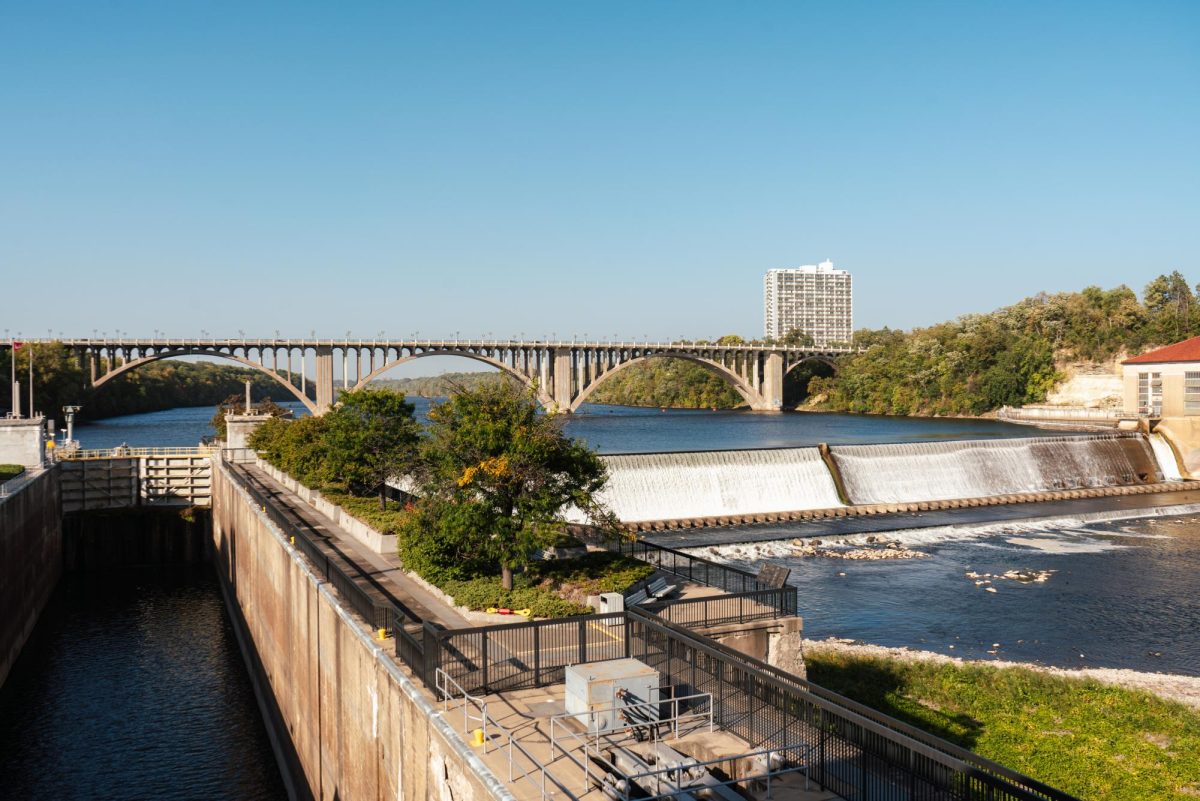Whether St. Paul’s Lock and Dam No. 1 will be removed is still uncertain as the U.S. Army Corps of Engineers continues its research into the lock and dam near the old Ford factory.
Locks and dams hold back water in the river to make pools of water for easier boat navigation along the river. The study into Lock and Dam No. 1 is exploring options to transfer the property management from the federal government to another entity and new opportunities for the site, including removal, according to U.S. Army Corps of Engineers spokesperson Patrick Moes.
In the wake of the closure of the Upper St. Anthony Falls Lock and Dam in 2015, the U.S. Army Corps announced three different studies would take place to see if the federal government should continue to operate the three dams in the Twin Cities, Friends of the Mississippi River spokesperson Colleen O’Connor Toberman said.
The three locks and dams in the Twin Cities are the Upper St. Anthony Falls Lock and Dam, the Lower St. Anthony Falls Lock and Dam in Minneapolis, and Lock and Dam No. 1 in St. Paul.
“For almost 10 years now, we’ve known these disposition studies need to happen, yet the Army Corps has not completed a single one of them,” Toberman said.
The studies look at the impacts of a possible change in management of the locks and dams, Moes said in a statement to the Minnesota Daily.
“The study is looking at five different options for Lock and Dam (No.) 1 to include no changes; complete deauthorization of the site; partial deauthorization, which would mean that we continue to own and operate some of the features at the site; and potential opportunities for new opportunities at the site outside of the existing navigation authorization,” Moes said in the statement.
When the Upper St. Anthony Falls Lock and Dam was closed to keep invasive carp from entering the Mississippi River, it made the downstream Lower St. Anthony Falls Lock and Dam as well as Lock and Dam No. 1 effectively obsolete, Toberman said. If Lock and Dam No. 1 were removed, it would drastically change the state of the river.
“When you make a dam, you’re basically turning a river into a lake,” Toberman said.
Although discussions of the dam have been ongoing for years, it is hard to know when a decision regarding the dam will be reached, Toberman said.
“I always tell people, if dam removal ends up being the best option, it’ll take 10 or 20 years easy before any dams are removed,” Toberman said. “This is a very, very complex project, and the Corps does not move quickly.”
The Friends of the Mississippi River have been working with Owámniyomni Okhódayapi, an Indigenous non-profit organization, to engage with Indigenous tribes about the effects of the potential removal, Toberman said.
“It’s really important to us that Dakota tribes are well represented in this process,” Toberman said. “There are several sacred sights directly in the stretch that these locks and dams have turned into lakes, and have been artificially impounded.”
Dam removals generally benefit the local ecosystem, however, there is a lot to consider about how landscape change in the river would affect the Twin Cities, Toberman said.
“Every bridge around the locks and dams needs to be studied for whether or not a changed water level would require adaptations to maintain the bridges’ structural soundness,” Toberman said.
Other potential effects of the removal include the return of seasonal flooding along the river on the floodplain, Toberman said. This includes the trails and parks along the river.
Additionally, storm drains would have to be lowered to meet the new water levels as the removal of the dam would lower the water removal, Toberman said.
“We need to understand the costs, given the how developed of an area we have around the river here,” Toberman said.
With Lock and Dam No. 1’s construction over a century ago, removing it would be a major change for all communities involved, Toberman said.
“No one alive remembers the character of the river at this point before they were built,” Toberman said.













